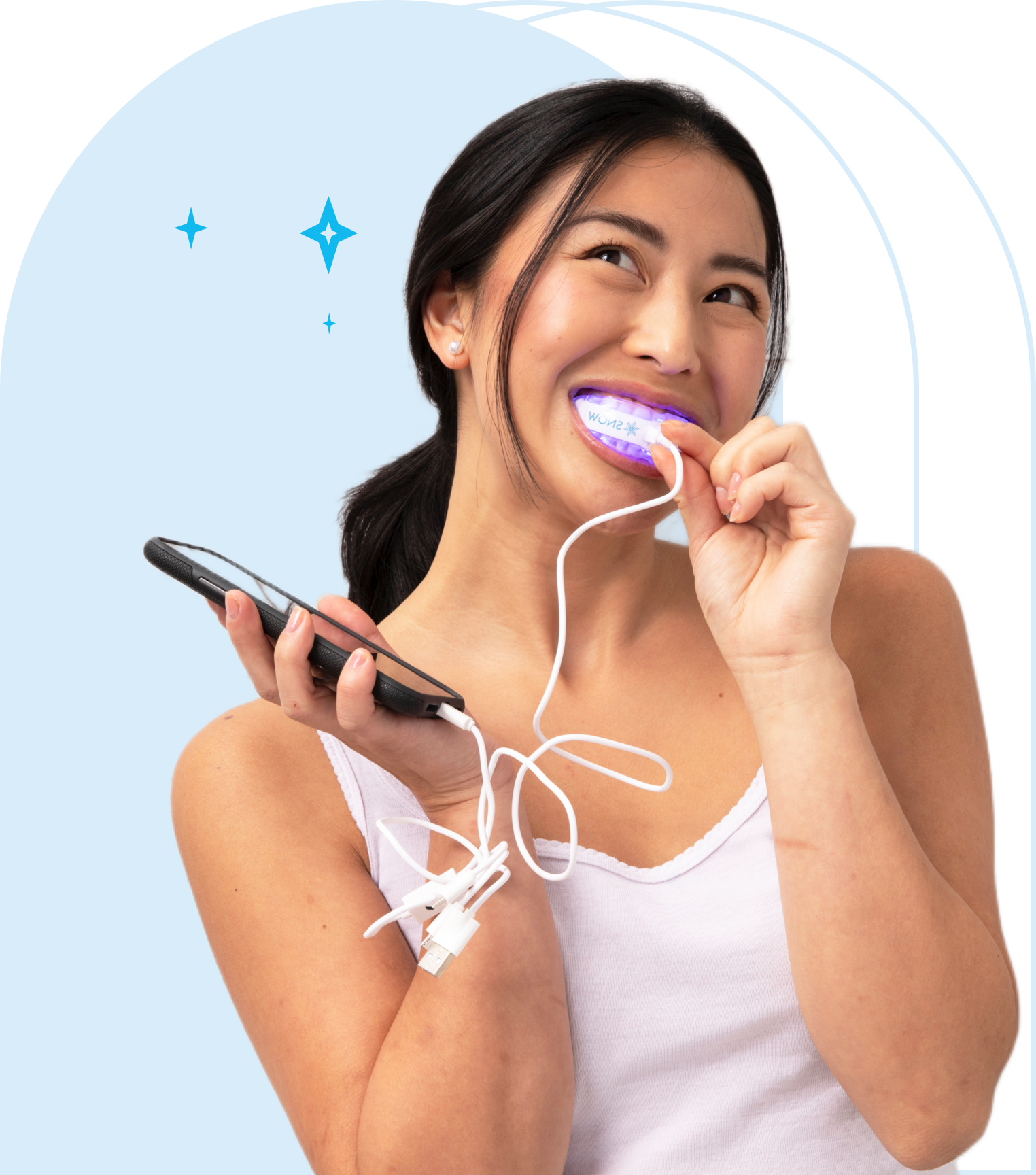Wondering how long does toothpaste last?
Most toothpaste tubes remain effective for about two years from the date of manufacture. During this time, ingredients like fluoride are still active in protecting your teeth.
But what happens when your toothpaste expires?
In this guide, we’ll cover how to identify expired toothpaste, what causes it to break down, how the expiration date matters, and how to properly store toothpaste to extend its life. If you’ve ever asked, “Does toothpaste really go bad?”—this article has your answers.
Key Takeaways
-
Toothpaste has a shelf life of about two years, during which active ingredients like fluoride maintain their effectiveness for dental care.
-
Signs of expired toothpaste include changes in texture, color, and smell, indicating it’s time for replacement to ensure oral hygiene.
-
Proper storage in a cool, dry place is essential to prolong toothpaste’s shelf life, while expired toothpaste can still be repurposed for cleaning tasks.
Understanding Toothpaste Shelf Life
Toothpaste, like many other consumable products, comes with an expiration date. Most toothpaste generally has a shelf life of about two years. This period starts from the date of manufacture. This timeframe is crucial because the active ingredients, particularly fluoride, need to remain effective to provide proper dental care. The American Dental Association requires that toothpaste contain fluoride to receive its Seal of Acceptance, ensuring its effectiveness in preventing cavities and maintaining oral health.
Manufacturers print expiration dates on both the tube and the packaging to ensure that consumers can easily check the freshness of their toothpaste. This expiration date printed is there for a reason; using toothpaste beyond this period can mean compromised effectiveness. Dental professionals advise replacing your toothpaste every two years to ensure optimal fluoride stability and effectiveness.
The two-year expiration timeframe applies to unopened toothpaste stored correctly. Once opened, environmental factors can accelerate its degradation. Therefore, adhering to these expiration dates and proper storage guidelines ensures that your toothpaste remains effective in cleaning your teeth and preventing cavities.
Why Toothpaste Expires and What It Means for Your Oral Health

Ever wondered why that old tube of toothpaste in your medicine cabinet has an expiration date printed on it? It’s not just a marketing tactic—toothpaste expires because its active ingredients, especially fluoride, gradually break down over time. As this happens, the product loses its ability to effectively fight tooth decay and strengthen weakened enamel.
Fluoride Breakdown Over Time
Fluoride is the primary ingredient in most toothpaste, primarily aimed at preventing cavities and strengthening weakened enamel. But fluoride doesn’t remain stable forever. Research shows that different formulations, such as stannous fluoride, degrade at different rates:
-
Sodium monofluorophosphate (NaMFP) loses soluble fluoride over time, making it less effective for cavity prevention.
-
Sodium fluoride (NaF) toothpaste, especially when paired with silica abrasives, tends to remain more stable and effective beyond the expiration date.
-
Toothpastes with calcium-based abrasives can reduce fluoride availability, meaning even before the expiry, the product might not perform as promised.
Beyond Fluoride: Degradation of Other Ingredients
It’s not just fluoride that degrades. Over time, other active ingredients lose their potency:
-
Flavoring agents may become bitter or stale.
-
Humectants that keep toothpaste moist may fail, causing dryness or separation.
-
Detergents (which create foam) can lose their effectiveness, reducing cleaning power.
This degradation means that even if the old tube still looks or smells okay, its performance is compromised.
Signs Your Toothpaste Has Expired
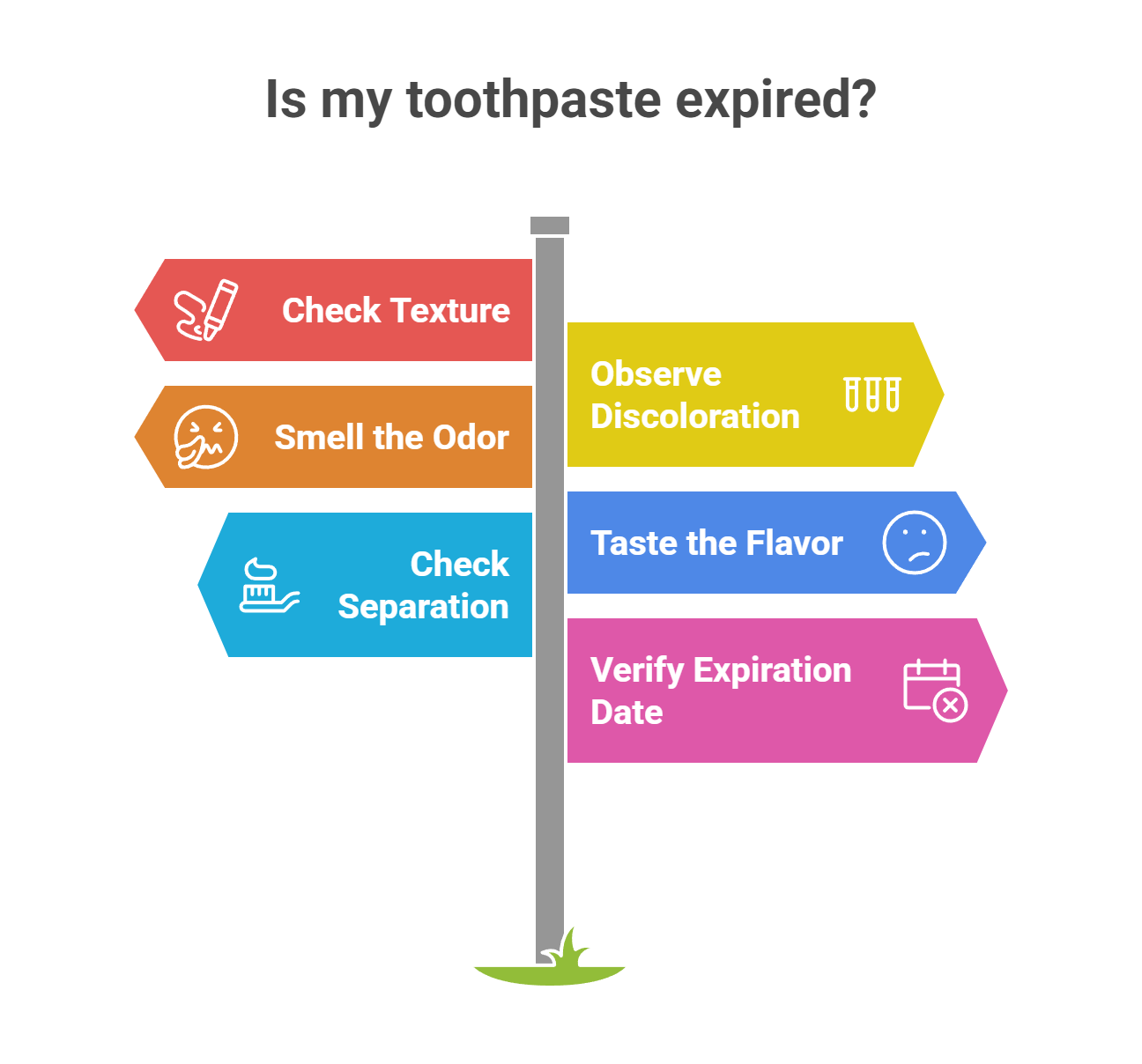
If you're wondering whether that old tube in your medicine cabinet is still safe to use, here’s the simple answer: check for these signs. Identifying expired toothpaste is crucial for maintaining its effectiveness in protecting your teeth from cavities and weakened enamel. Below are the most common indicators your tube of toothpaste needs replacing:
1. Change in Texture
-
Gritty, dry, clumpy, or separated consistency
-
Caused by the breakdown of active ingredients, such as fluoride
-
Affects how well the toothpaste spreads and performs
2. Discoloration
-
Faded or yellowed appearance, especially if exposed to direct sunlight
-
Indicates degradation of the primary ingredient, silver diamine fluoride, which is primarily aimed at cavity protection
3. Unpleasant Smell
-
A sour or musty odor signals chemical breakdown
-
Not pleasant to use and potentially less safe for your teeth
4. Odd or Bland Taste
-
A weak or unusual taste could mean your active ingredients have degraded
-
Reduces the effectiveness of the product in protecting enamel and freshening breath
5. Separation Inside the Tube
-
Water or gel is separating from the paste inside the tube of toothpaste
-
A sign that the formulation is no longer stable
6. Past the Expiration Date
-
Check the expiration date printed on the box or tube
-
Even if it looks okay, an expired toothpaste may no longer prevent cavities or protect weakened enamel
The Impact of Storage on Toothpaste Longevity
Wondering if toothpaste goes bad sooner than expected? The shelf life of most toothpaste tubes is around two years, but that’s only if you store toothpaste properly. Environmental conditions—like heat, moisture, or exposure to direct sunlight—can accelerate the breakdown of active ingredients such as fluoride, reducing the product's benefits and effectiveness in protecting your tooth enamel.
To keep your toothpaste fresh and safe, follow proper storage guidelines. Poor storage habits can make your toothpaste expire prematurely and even do more harm than good to your dental health.
Proper Storage Conditions

To extend the life and preserve the potency of your fluoride toothpaste, follow these simple storage rules:
-
Keep in a cool, dry place, like a medicine cabinet or bathroom drawer.
-
Avoid humidity and heat, which can reduce flavor, texture, and cavity-fighting strength.
-
Store toothpaste tubes away from direct sunlight to prevent degradation of enamel-protecting ingredients.
-
Always close the cap tightly to prevent the paste from drying out.
-
Do not leave the tube open—this increases the chance of contamination and accelerates the breakdown of ingredients.
By storing it properly, you preserve its cleaning power, fluoride potency, and ability to support long-term enamel strength.
Common Storage Mistakes
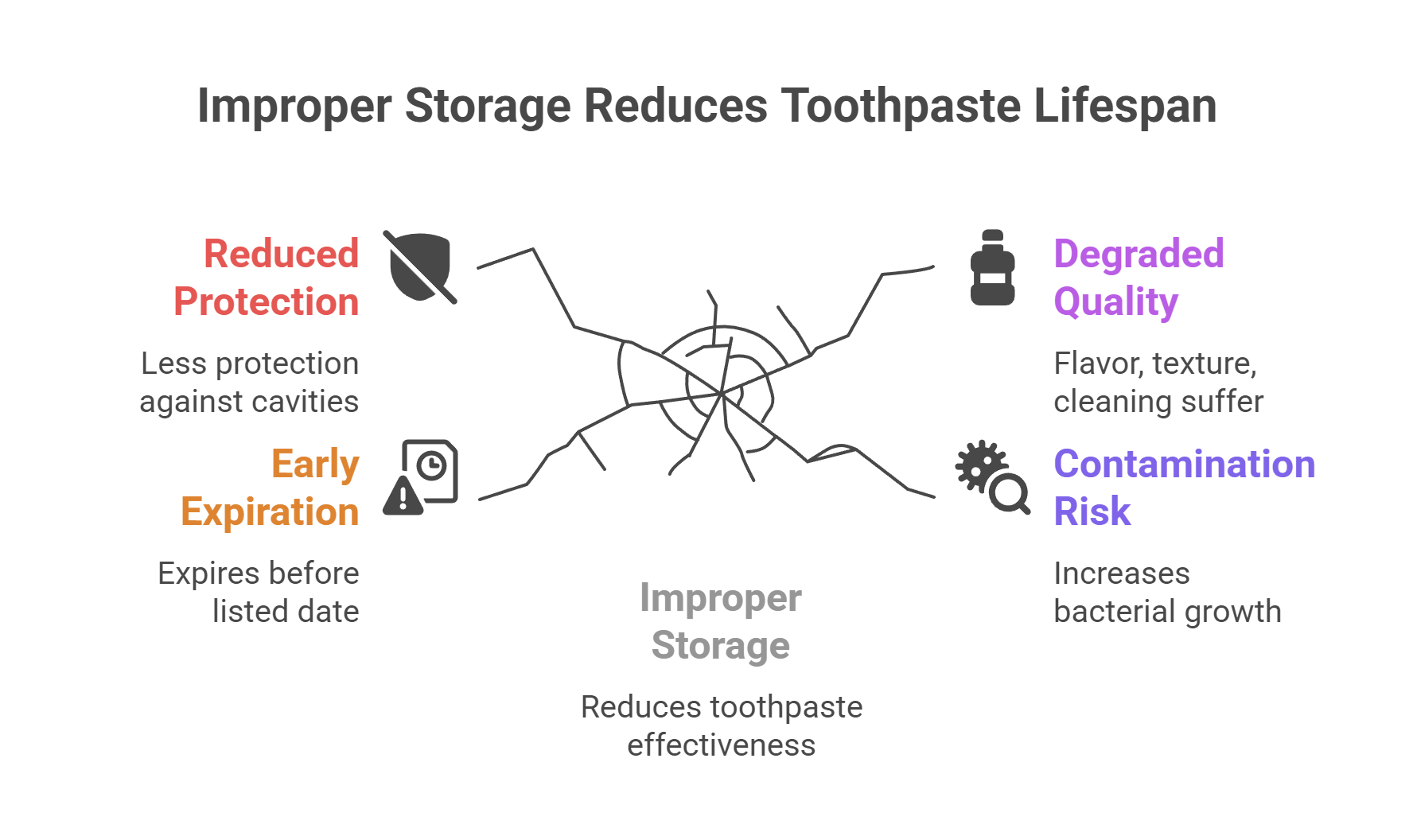
Improper storage can cause toothpaste to expire well before the expiration date listed on the packaging. Here are common mistakes that reduce shelf life and potentially affect your oral health:
-
Leaving toothpaste on humid counters: Steam from showers can affect consistency and lead to an early expiration status.
-
Storing near heat sources: Heat causes active ingredients to break down faster, reducing protection against cavities and enamel erosion.
-
Forgetting to seal the tube: A loose cap allows air and bacteria inside, degrading flavor, texture, and cleaning ability.
-
Sharing toothpaste tubes: Increases the risk of contamination and bacterial growth, especially if caps aren’t cleaned.
The simple answer? Always store toothpaste in a dry place, close the cap securely, and use a clean toothbrush each time. These small changes ensure your toothpaste delivers its full benefits for up to two years—just as intended.
Safety of Using Expired Toothpaste
Using expired toothpaste is not immediately harmful, but it significantly reduces effectiveness in cleaning and protecting teeth. The diminished effectiveness of fluoride, crucial for preventing cavities and strengthening enamel, is the primary concern.
Expired toothpaste may still clean your teeth to some degree, but it won’t offer the same level of protection and freshness as an old tube. This reduced effectiveness can lead to a higher risk of tooth decay and other dental issues. Therefore, utilizing toothpaste tubes that are in good condition is crucial for maintaining effective oral hygiene.
Always check the expiration date on your toothpaste and replace it if past its prime to ensure the best dental care. Though not harmful, expired toothpaste offers significantly reduced dental protection.
Professional Recommendations for Toothpaste Usage
Dental professionals stress regular replacement and optimal brushing habits for good oral hygiene. Fresh toothpaste ensures full effectiveness in cleaning and protecting teeth. Proper storage and timely replacement are key to maintaining effectiveness.
Regular dental check-ups are also essential for maintaining dental health. Consistent brushing with fresh toothpaste and adhering to professional dentist recommendations can help prevent cavities and keep your teeth healthy, providing numerous benefits.
Let’s delve into more specific advice on regular replacement and optimal brushing habits.
Regular Replacement
Toothpaste should be replaced every two years or sooner if you notice signs of expiration. A standard tube of toothpaste will typically last three months or less if used twice daily. This regular replacement ensures that you are always using effective toothpaste.
To maintain its freshness, store your toothpaste in a sealed container away from humidity and direct sunlight. The American Dental Association requires expiration dates on toothpaste to ensure product effectiveness, so always check the expiration date when purchasing new toothpaste.
Optimal Brushing Habits
Consistent brushing with fresh toothpaste is vital for maintaining oral health. Brushing twice a day with fluoride toothpaste enhances plaque removal and keeps teeth and gums healthy. Prioritizing consistency in brushing habits is crucial for long-term dental health.
Ensure you brush for at least two minutes each session, covering all areas of your mouth. This routine helps prevent cavities, strengthens weakened enamel, and maintains a healthy smile.
Alternative Uses for Expired Toothpaste
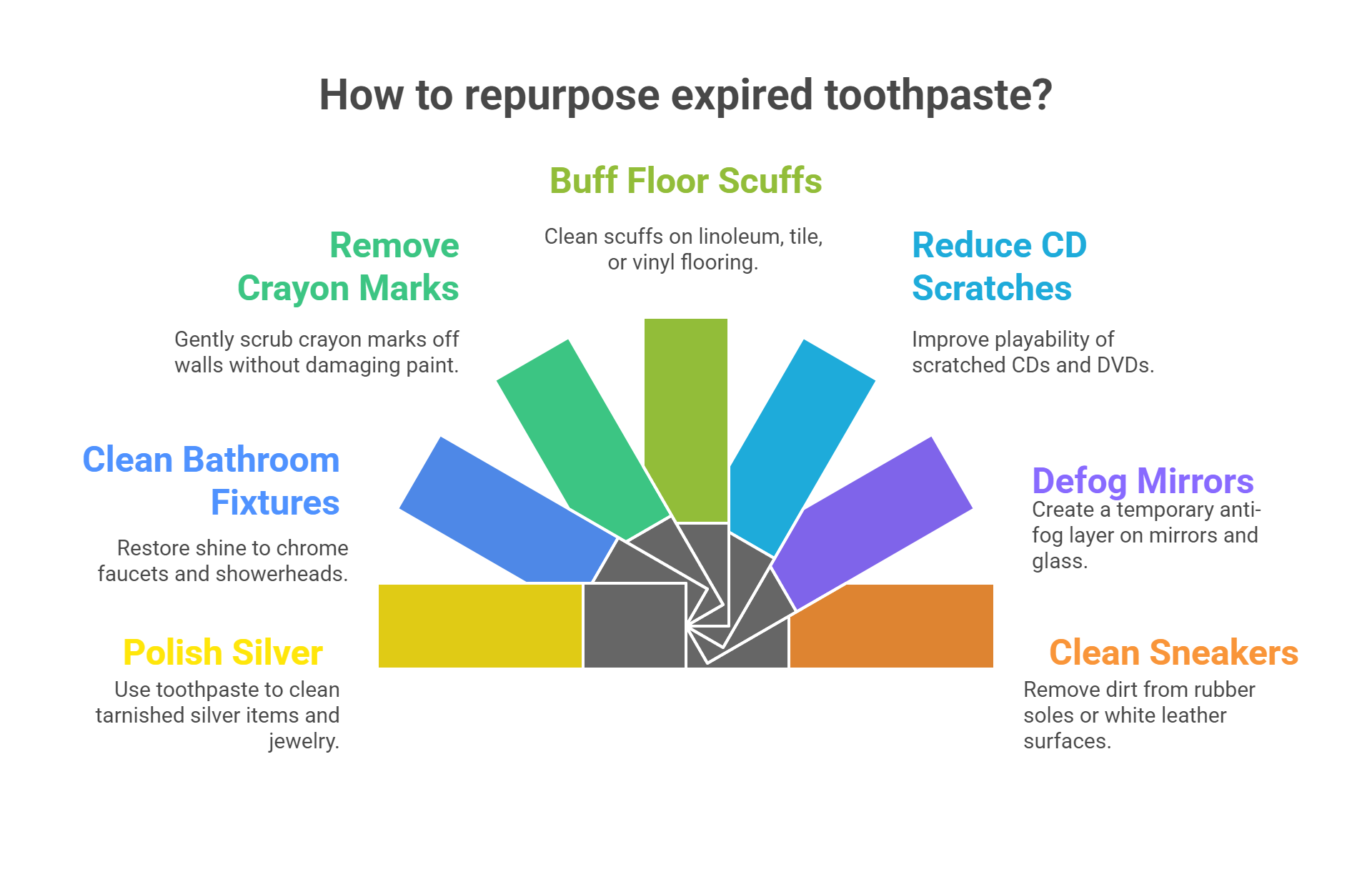
Don’t throw out that old tube just yet. While expired toothpaste is no longer ideal for brushing your teeth, it can still be put to good use around the house. Here are several practical and effective ways to repurpose it:
1. Polish silver and jewelry
Use a small amount of toothpaste to clean tarnished silver items or dull jewelry. Apply it with a soft cloth, gently rub, rinse, and buff dry.
2. Clean bathroom fixtures
Toothpaste can restore shine to chrome faucets, sink handles, and showerheads. Apply it directly, scrub with a sponge or cloth, and rinse thoroughly.
3. Remove crayon marks from walls
Apply expired toothpaste to crayon marks on painted walls and gently scrub with a damp cloth. This can lift the wax without damaging the paint.
4. Buff out scuff marks on floors
Use toothpaste to clean scuffs on linoleum, tile, or vinyl flooring. Rub a small amount over the mark and wipe clean for a smoother surface.
5. Reduce scratches on CDs and DVDs
For minor surface scratches, gently rub toothpaste in circular motions, then rinse and dry. It won’t fix deep damage but may improve playability.
6. Defog mirrors and glass
Toothpaste creates a temporary anti-fog layer. Spread a thin layer over the glass, let it dry briefly, and wipe clean for a clearer mirror after showers.
7. Clean sneakers and white soles
Toothpaste helps remove dirt from rubber shoe soles or white leather surfaces. Scrub gently with an old toothbrush for best results.
These alternative uses are a smart way to reduce waste and extend the usefulness of a product that’s no longer safe for dental care.
Final Thoughts
Understanding the shelf life of toothpaste and recognizing the signs of expiration are crucial for maintaining effective oral hygiene. Proper storage conditions and regular replacement ensure that your toothpaste remains effective in cleaning and protecting your teeth. Using fresh toothpaste and following professional recommendations can help you achieve optimal dental health.
Remember, while expired toothpaste is not harmful, it is significantly less effective. Always check the expiration date, store your toothpaste correctly, and replace it regularly to keep your teeth healthy and your smile bright.
Frequently Asked Questions
Does toothpaste expire?
Yes, toothpaste does expire, usually around two years from the manufacturing date. It's important to check the expiration date to ensure its effectiveness.
What happens to the ingredients in toothpaste over time?
Over time, the ingredients in toothpaste, particularly fluoride, become less effective, diminishing their ability to protect against cavities. It's advisable to check expiration dates and replace old toothpaste to ensure optimal oral health.
How can you tell if toothpaste has gone bad?
You can tell if toothpaste has gone bad by checking for changes in texture, unusual smell or taste, ingredient separation, and discoloration. If any of these signs are present, it's best to replace the toothpaste.
What should you do with expired toothpaste?
You should replace expired toothpaste with a fresh tube, but it can also be repurposed for cleaning tasks around the house.
Where is it recommended to store toothpaste to maintain its effectiveness?
To maintain its effectiveness, store toothpaste in a cool, dry place like a medicine cabinet or bathroom drawer. This prevents it from degrading due to moisture or temperature fluctuations.















































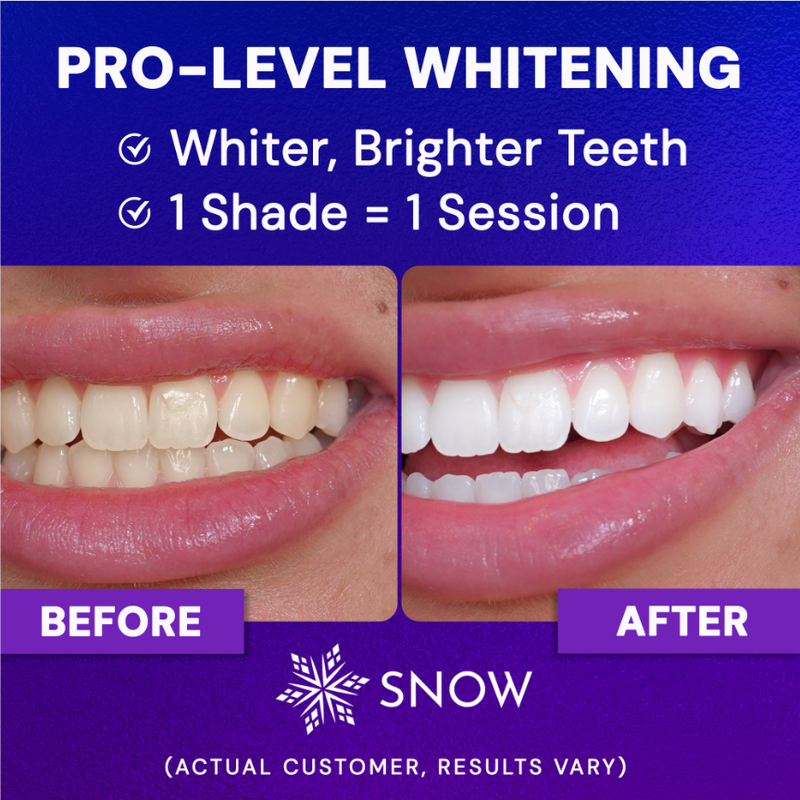
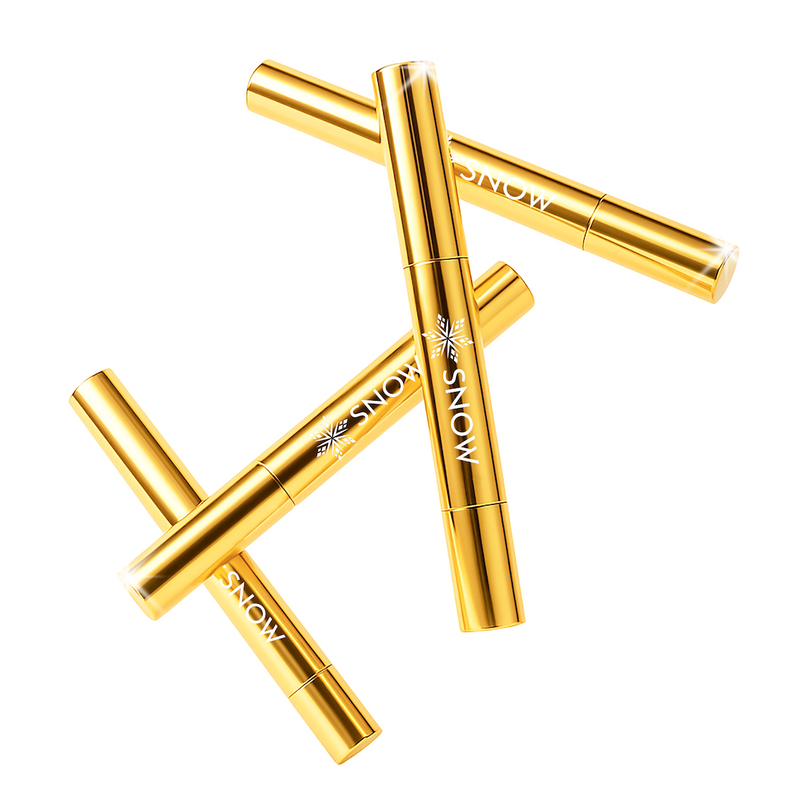
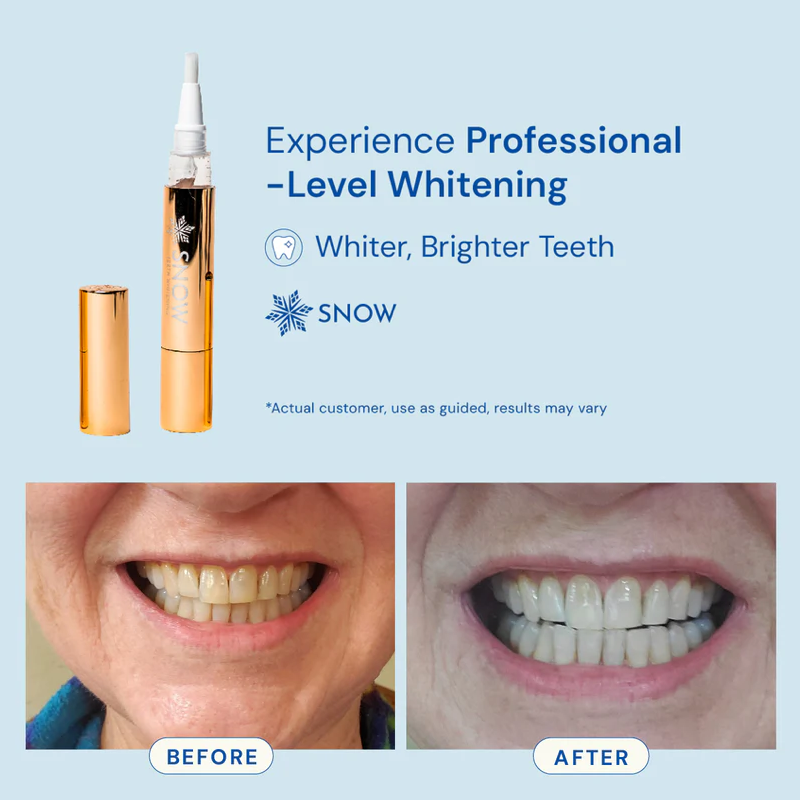


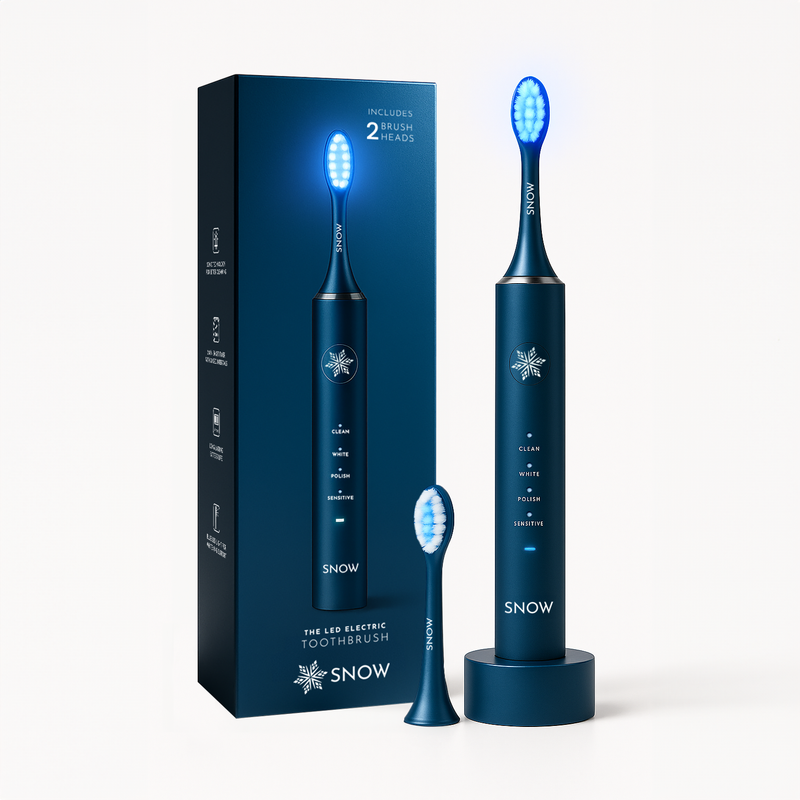


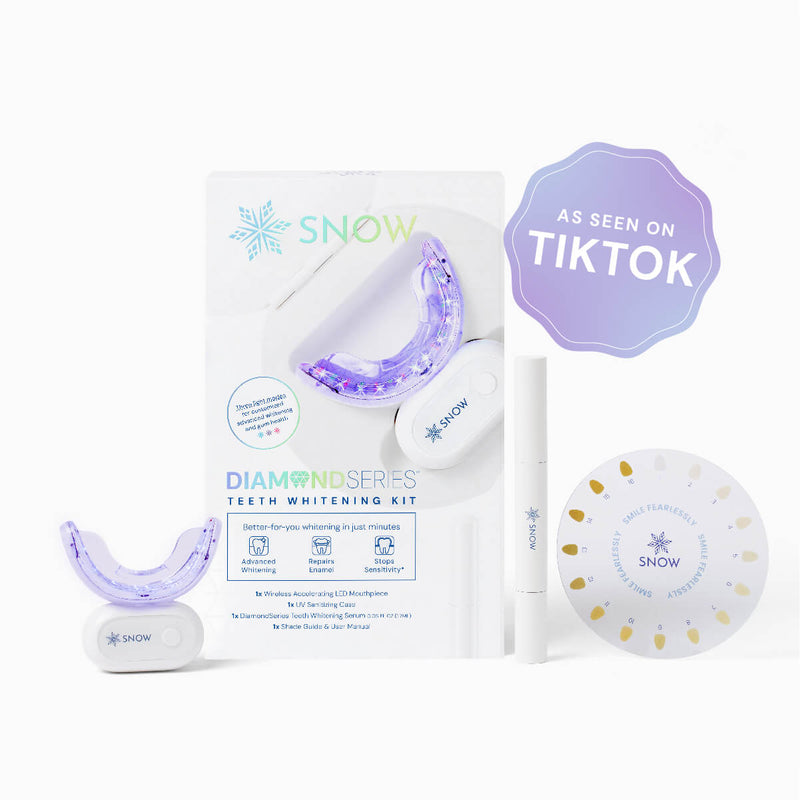
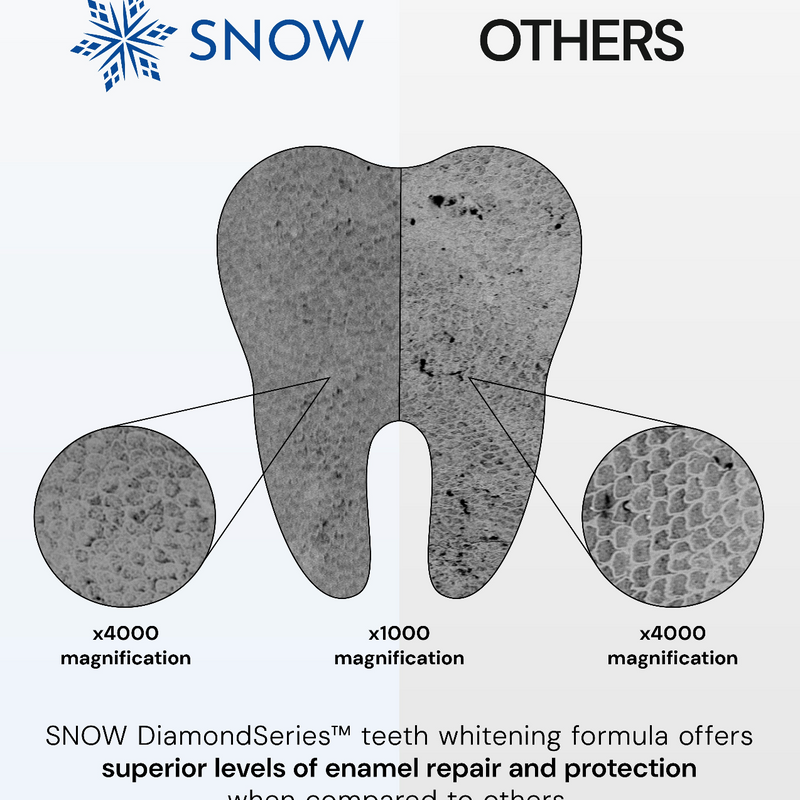


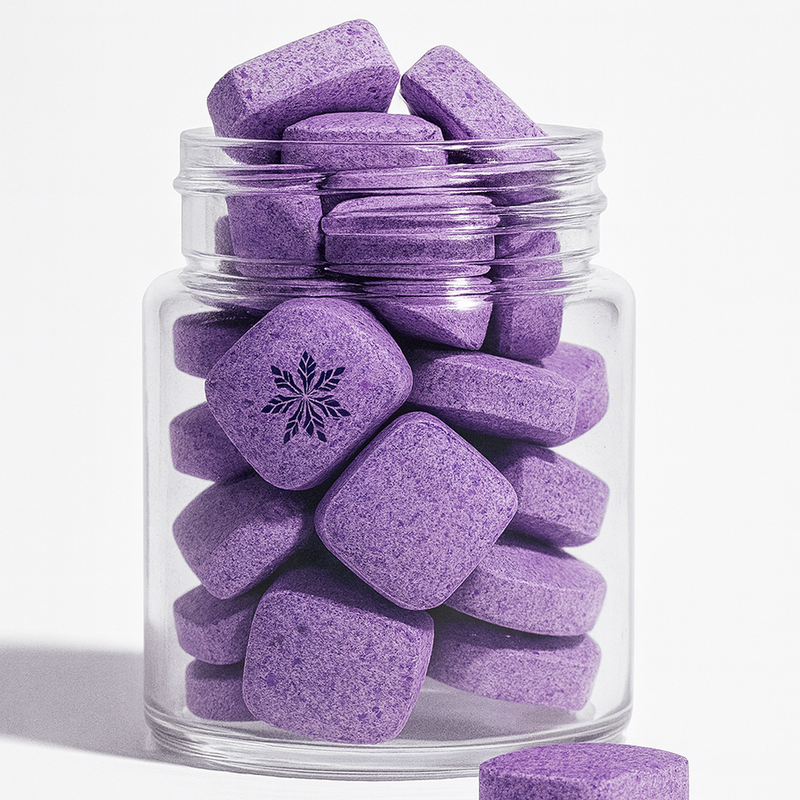
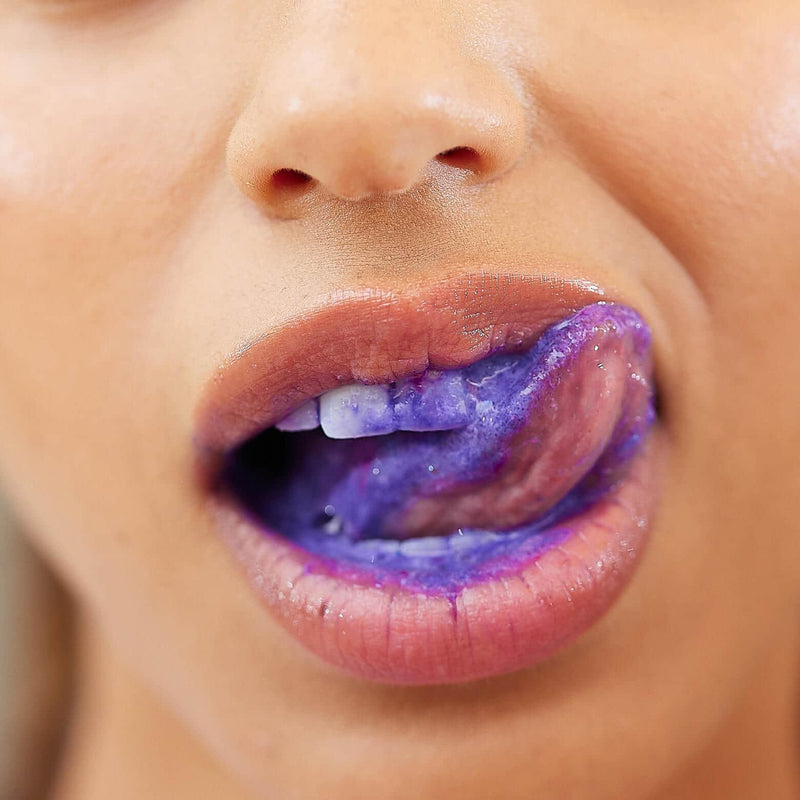
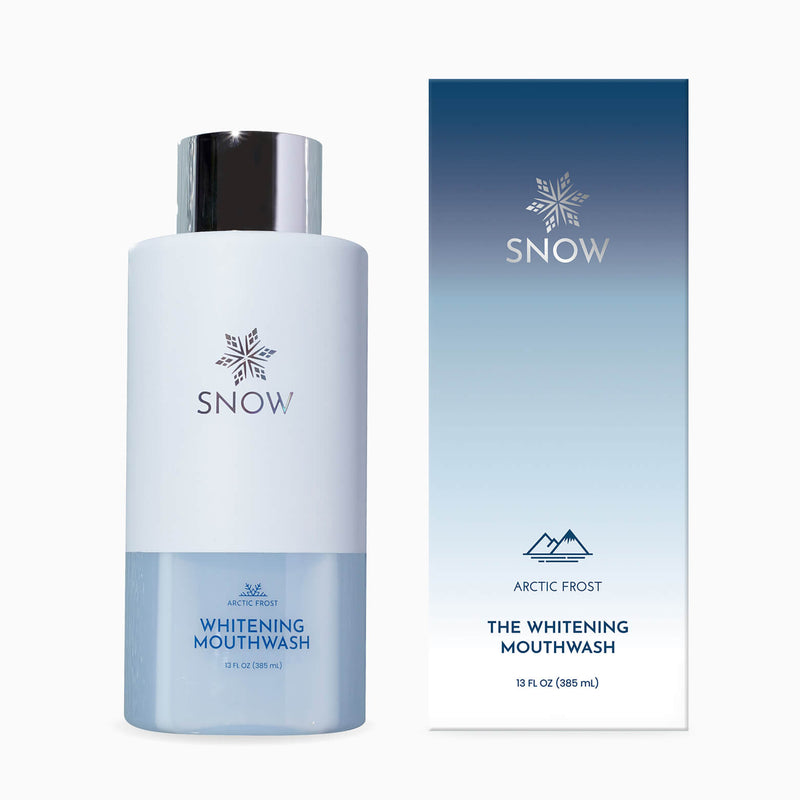




![Clove Oil for Toothache Relief [Does it Really Work]](http://www.trysnow.com/cdn/shop/articles/clove_oil_for_toothache_does_it_really_work.png?v=1756135924)
